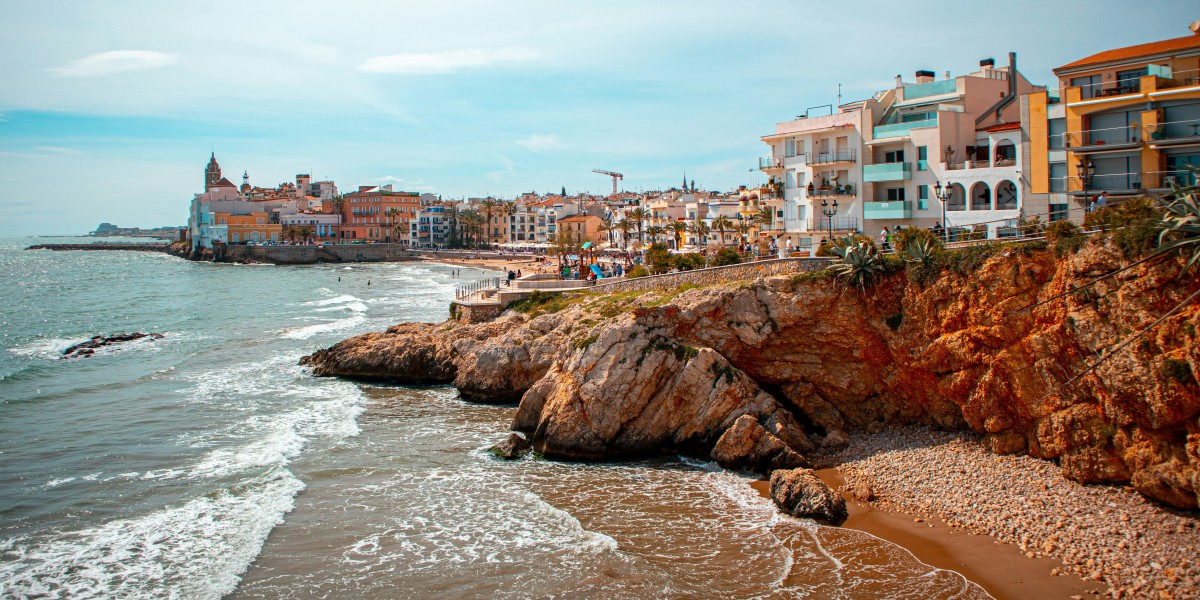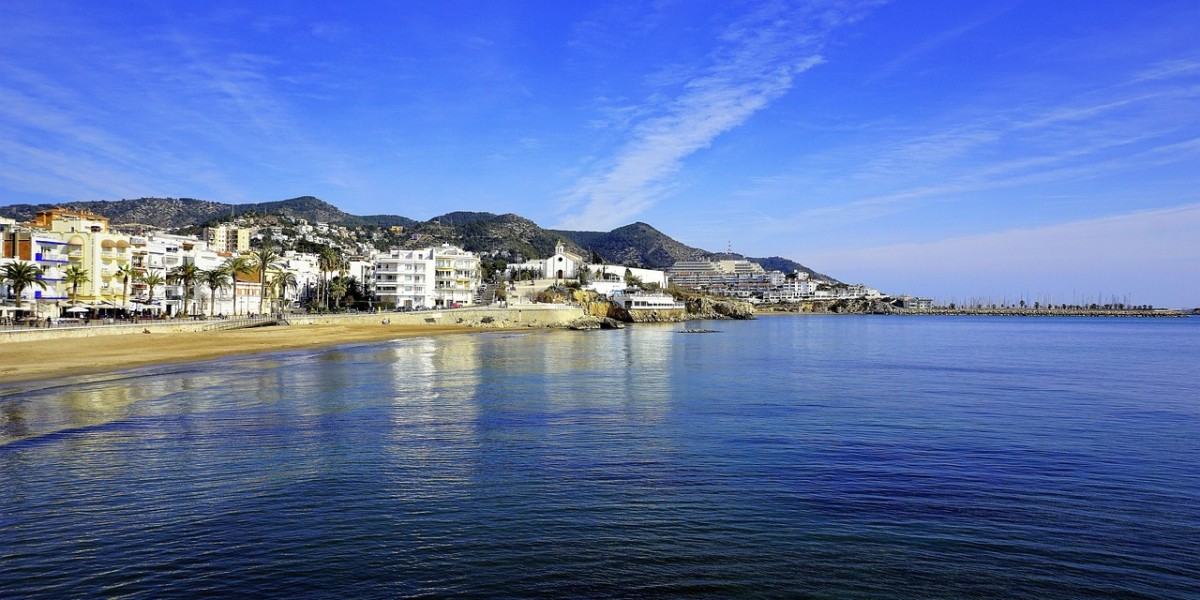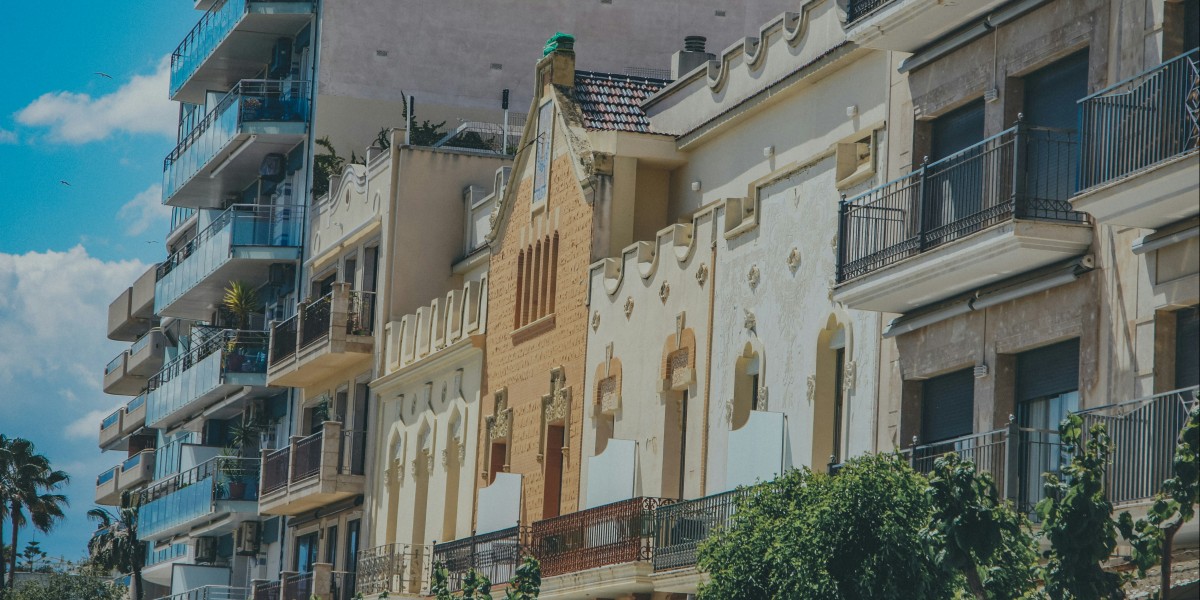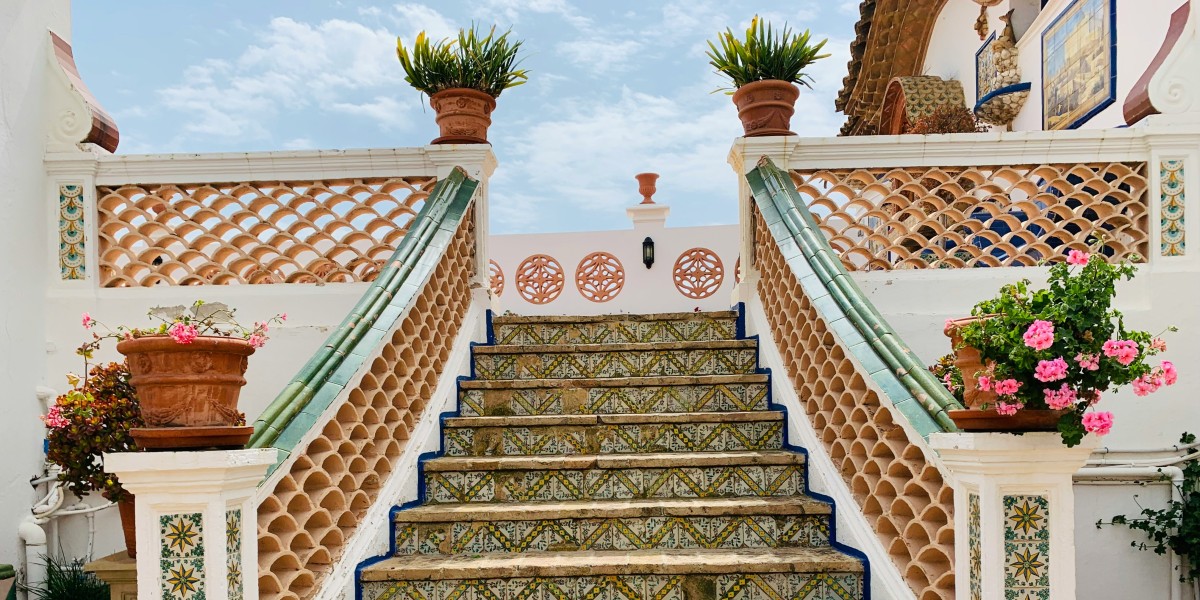
Sitges is a lively seaside town on Spain's northeastern coast, just 35 kilometres from Barcelona. Once a meeting point for great artists, Sitges has become a popular choice for expats who value artistic culture, coastal beauty, and modern amenities. The town's numerous sandy beaches and bohemian spirit are undoubtedly key reasons why living in Sitges is so appealing. Plus, it is recognised as one of Spain’s most LGBTIQ+-friendly towns.

Is Sitges a good place to live?
Sitges is a buzzing coastal town that has evolved from its humble beginnings as a fishing village to one of the most popular destinations in Catalonia. The pleasant Mediterranean climate in Sitges allows a relaxed, outdoor lifestyle by the sea. With plenty of sunshine and mild temperatures year-round, residents can enjoy outdoor activities such as hiking and golf pretty much throughout the year. Water sports like sailing and surfing are also popular and a great activity for children.
Sitges’s rich art history makes it a compelling destination for creative types. In the late 19th century, the town became a focal point for artists like Joan Roig i Soler and Joaquim de Miró, who founded the Luminist School of Sitges to capture the town's golden landscapes and daily life. This artistic legacy is still felt among the many cultural events organised, including the annual Sitges Carnival, Gay Pride celebrations and International Film Festival.

Living in Sitges: pros and cons
When deciding to move to a new place, it is important to consider the advantages and disadvantages of living there. This is especially relevant for sought-after destinations such as Sitges, where it's easy to get swept up in the coastal appeal.
Some good aspects of living in Sitges:
- Colourful culture: Sitges is known for its diverse cultural events, including film festivals and art shows, ensuring you won’t run out of things to do.
- Community spirit: The town has a strong sense of community, with numerous social clubs and events for residents to join to feel connected.
- Scenic beauty: the beautiful beaches and Sitges’s charming historic centre contribute to a high quality of life.
Some challenges of living in Sitges:
- High summer crowds: During the summer, Sitges can get very crowded with tourists, impacting daily life.
- Higher living costs: The popularity of Sitges as a tourist destination may result in higher living costs compared to other nearby areas.

Is it expensive to live in Sitges?
The cost of living in Sitges is generally higher than in some other parts of Spain, due to its popularity both as a place to live and also to visit. Being on the coast and close to Barcelona makes real estate here particularly in demand. To get an idea of the price differences, in February 2025, property prices in Sitges were at €4,472 per m2, whereas homes for sale in Tarragona, a city slightly further down the coast, were €2,068 per m2. Rental costs in Sitges also tend to be on the higher side, with an 80 m2 apartment averaging around €1,400 per month. However, these costs don't quite reach the elevated prices found in Barcelona, where an apartment of the same size costs around €1,900.
Dining out in Sitges can vary, but you can expect to pay around €50 for a meal for two in a mid-range restaurant, and a beer shouldn’t be much more than €3. But be wary of increased prices during holiday seasons.
Sitges or Costa Brava?
Both are popular day-trip destinations from Barcelona, with Costa Brava consisting of the stretch of coastline north of Barcelona, and Sitges south of the city. Sitges is known for its nightlife and dynamic cultural scene. Costa Brava, on the other hand, is generally appreciated for its quieter, more natural environment. Although Sitges also boasts considerable natural beauty, with its sandy beaches a key highlight.
Living in Costa Brava is the right choice for those looking to settle along a slightly wilder part of the coast. The lively town of Lloret de Mar in Costa Brava is arguably an exception to the Costa Brava’s overall calmer feel. It parallels Sitges with its similar population size and reputation for great nightlife and carefree spirit. However, the cost of living and property prices in Lloret de Mar are considerably lower than in Sitges, making it a more affordable option.

Sitges: restaurants and where to stay
If you’re not completely certain whether Sitges is the place you’d like to call your new home, you could visit to get a real feel of the place and explore what there is to see. Sitges provides a range of accommodation options, ranging from luxury coastal villas with pools in tranquil neighbourhoods such as Vinyet. Or you can stay for a few nights in the old town, in a historic town house. Each neighbourhood offers something different.
Eating out in Sitges gives you plenty of options. You’ll find Michelin-recommended haute cuisine, as well as American-style restaurants burger joints. The local cuisine focuses on fresh seafood and traditional Catalan rice dishes. Sitges also holds appeal for those interested in its rich winemaking heritage, particularly the production of malvasía wine. Sitges has cultivated this sweet grape since the 14th century, and it is available for tasting in various local bodegas.

Is Sitges good for expats?
Sitges often experiences a mix of cultures, thanks to its appeal to expats and its thriving international community. There are plenty of services catering to foreign residents, including English-speaking dental clinics, vets, and construction companies. You’ll also find several clubs and groups for people looking to integrate into local life, providing a support system for newcomers.
There’s a regular direct train from Sitges to Barcelona, making travel to the big city hassle-free. Barcelona Airport is on the way to the city, less than 30 kilometres away from Sitges, so potential visits from family and friends will be straightforward.

